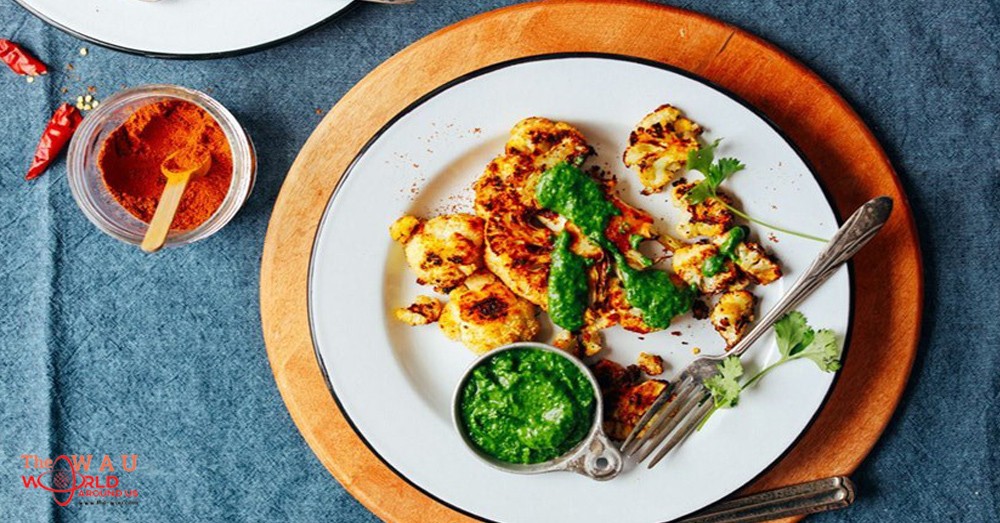Cauliflower, pumpkin and other staples of the autumn harvest are now in season. Think outside the (farm share) box with these creative recipes.
If the hype around pumpkin spice lattes is any indication, we are all ready to take the plunge into fall food trends. Luckily a lot of them are a whole lot healthier than the sugar-loaded calorie bomb that has a special place in every sweater-lovers’ heart.
To the contrary, fall produce is chock full of healthy nutrients. We all know that in-season foods tend to be a little easier on your wallet, plus they introduce a whole new array of ingredients to get creative with in the kitchen. (Admit it, you're a little tired of the chopped salads.)
What's on the menu? Root vegetables like turnips and sweet potatoes, winter squash and a new lineup of fruit to fill the bowl on your kitchen counter.
Whether you’re cooking up a weeknight dinner for one, meal prepping lunch or serving a hungry crowd of football fans, use the super foods of the season as inspiration to infuse autumn flavor and nutrients into your meals.
CAULIFLOWER

From pizza to rice to mashed "potatoes", cauliflower continues to be an increasingly popular ingredient for healthy home chefs. But beyond it's trendy appeal, the starchy vegetable offers up nutritional benefits that give it major staying power when it comes to fall produce picks. Cauliflower contains “vitamin C and folate, and like other members of the cabbage family, is rich in sulfur-containing compounds (glucosinolates) which act as antioxidants, and are anti- inflammatory,” says Bowerman, who is a fan of turning it into a low-carb rice substitute for a healthier fried rice. Simply pulse it in the food processor, then sauté in a little oil in a large skillet with a beaten egg, chopped leftover cooked veggies and leftover cooked meat, fish, shellfish or poultry (or tofu).
“Cauliflower is a cruciferous vegetable that has become a popular substitute for pizza crust and rice. It's no surprise why — one cup chopped has under 30 calories and 85 percent of your daily value of vitamin C,” says Lainey Younkin, MS, RD, LDN, founder of Lainey Younkin Nutrition in Boston, MA. “You can also roast cauliflower ‘steaks’ for a more flavorful option.”
Recipe box: For a 30-minute weeknight meal, try this Cauliflower Steak seasoned with a smoky shawarma spices blend, roasted until tender with a crust, and served with chutney, from Minimalist Baker.
BRUSSELS SPROUTS

“Brussels sprouts are cruciferous vegetables, which means they're loaded with cancer-fighting compounds,” says Younkin. “They are also high in vitamin K, which helps your blood clot. Shred them in a food processor and use as a base for your next salad or simply roast them on a baking sheet in the oven — add a little maple syrup for a sweet-savory punch.”
Recipe box: Serve Maple-Balsamic Roasted Brussels Sprouts as a side dish, or toss with onions, cranberries and toasted pecans and serve over farro for a heartier main course. (We are starring this one for the Thanksgiving spread!)
PUMPKIN

Canned pumpkin may just be the best kept secret on the grocery store shelves. While it’s available all year long, we feel a re-invigorated love for the ingredient when fall rolls around.
“A cup of sliced pumpkin has almost 200 percent of your daily value of vitamin A and is shock-full of vitamin C and potassium,” says Younkin. “As long as you aren't drinking it in syrup form in your latte, pumpkin is a healthy addition to any fall meal. A 1/2 cup of canned pumpkin delivers 3 grams of fiber and has just 5 grams of sugar and 50 calories. There isn't much you can't do with pumpkin — stir it into a soup, mix it into your morning oatmeal, or add it to a smoothie if it's an unseasonably warm day.
Susan Bowerman, MS, RD, director and Worldwide Nutrition Education and Training for Herbalife, suggests using canned pumpkin in smoothies and as a nutritious topping for Greek yogurt. She stresses to make sure you are buying canned pumpkin and not pumpkin pie mix, which is packed with added sugar.
Recipe box: Give breakfast an autumn twist with these Whole Wheat Pumpkin Pancakes. Top with sliced banana, a sprinkle of cinnamon and a drizzle of syrup.
Share This Post















